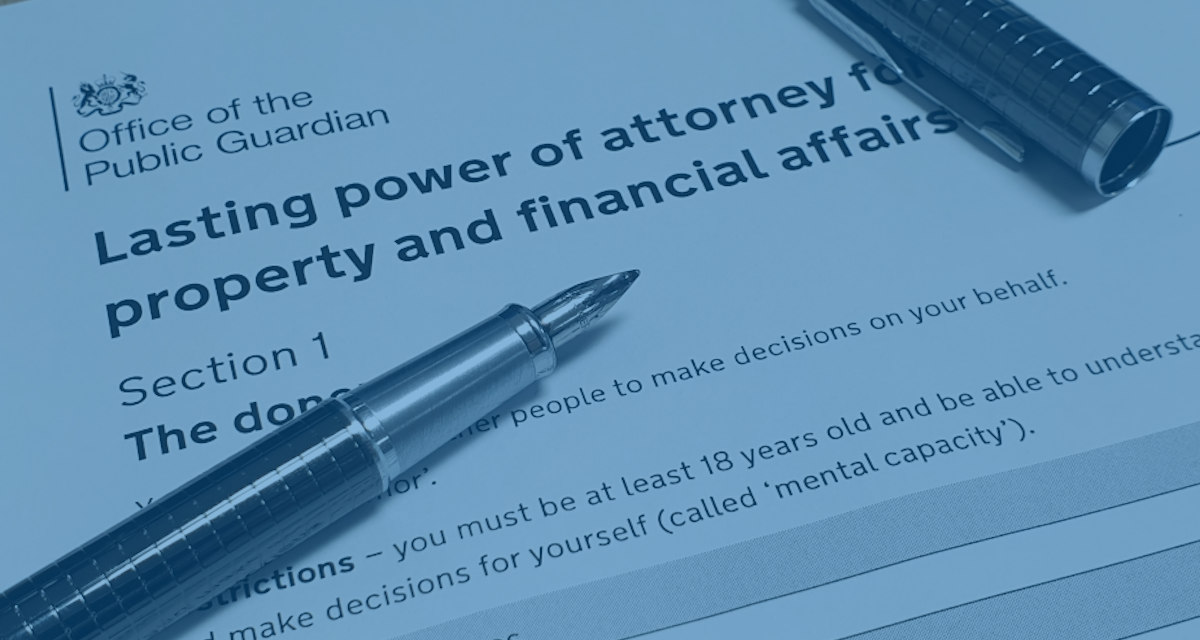A donor may occasionally review their Lasting Power of Attorney (LPA) or Enduring Power of Attorney (EPA) and realise that their circumstances have changed since the documents were signed. There are unfortunately no steps in place to amend an existing LPA or EPA and if the donor wishes to make changes, they will need to revoke their current documents and replace them with a new LPA.
The creation of a new LPA does not itself explicitly revoke a previous LPA or EPA. A Deed of Revocation is usually required, and some steps will need to be followed.
Revoking an EPA
EPAs cannot be registered with the Office of the Public Guardian (OPG) until the attorneys believe that the donor has lost capacity or is becoming mentally incapable. Most EPAs that you will see in practice will therefore be unregistered.
With an unregistered Enduring Power of Attorney, the process is simple.
- A Deed of Revocation should be drawn up including the details of the donor, the details of the attorneys and the date that it was signed by the donor. The Deed should then be signed by donor and witnessed.
- The donor should write ‘revoked’, ‘cancelled’ or similar wording over the EPA. The deed of revocation should then be kept with the EPA. We do not advise destroying the revoked EPA.
- The donor should inform the attorneys that it is now revoked.
It is advisable that the donor also inform any organisations holding a copy of the EPA, for example banks, that it is now revoked. The EPA or its Deed of Revocation does not need to be sent to the OPG.
If the EPA has been registered, an application will need to be made to the Court of Protection to revoke the EPA. This is not something that we can assist with.
Revoking an LPA
LPAs are slightly more complex, as they can be registered at the OPG at any time.
If the LPA is unregistered, the same procedure as revoking an unregistered EPA should be followed. An LPA isn’t technically created until it is registered. It could therefore be argued that it is unnecessary to revoke an unregistered LPA using a Deed of Revocation, however this would provide little protection to a donor who has lost capacity and there is no written evidence to prove revocation.
If the LPA is registered, the process will be as follows:
- A Deed of Revocation should be drawn up including the details of the donor, the details of the attorneys, the date that it was signed by the donor and the date that it was registered. The Deed should then be signed by donor and witnessed.
- The donor should inform the attorneys that it is now revoked.
- The donor should inform any organisations holding a copy that it is now revoked.
- The LPA and its Deed of Revocation should to be sent to the OPG.
One Deed of Revocation is required per LPA. One Deed cannot be used to revoke both a Property and Financial Affairs LPA and a Health and Welfare LPA.


 © Trust Wills & Probate Limited t/a WillPack. All rights reserved.
© Trust Wills & Probate Limited t/a WillPack. All rights reserved.
One comment
Colin James
10 July 2021 at 11:37 am
As I understand the rules around an LPA, a “partial deed of revocation” can be used to remove an Attorney from an LPA. The need to remove an attorney does not need the original LPA to be revoked and replaced. However care must be taken as to how the attorneys have been appointed and removing one attorney may mean the original LPA cannot be used. A partial deed of revocation can only be use to remove an attorney and if another attorney is to be appointed the original LPA needs to be revoked and a new LPA drawn up providing the donor has capacity
Comments are closed.